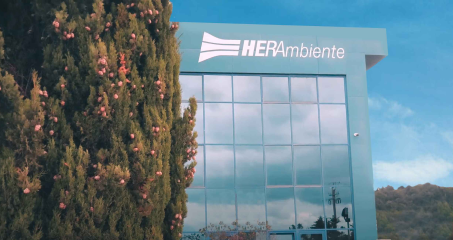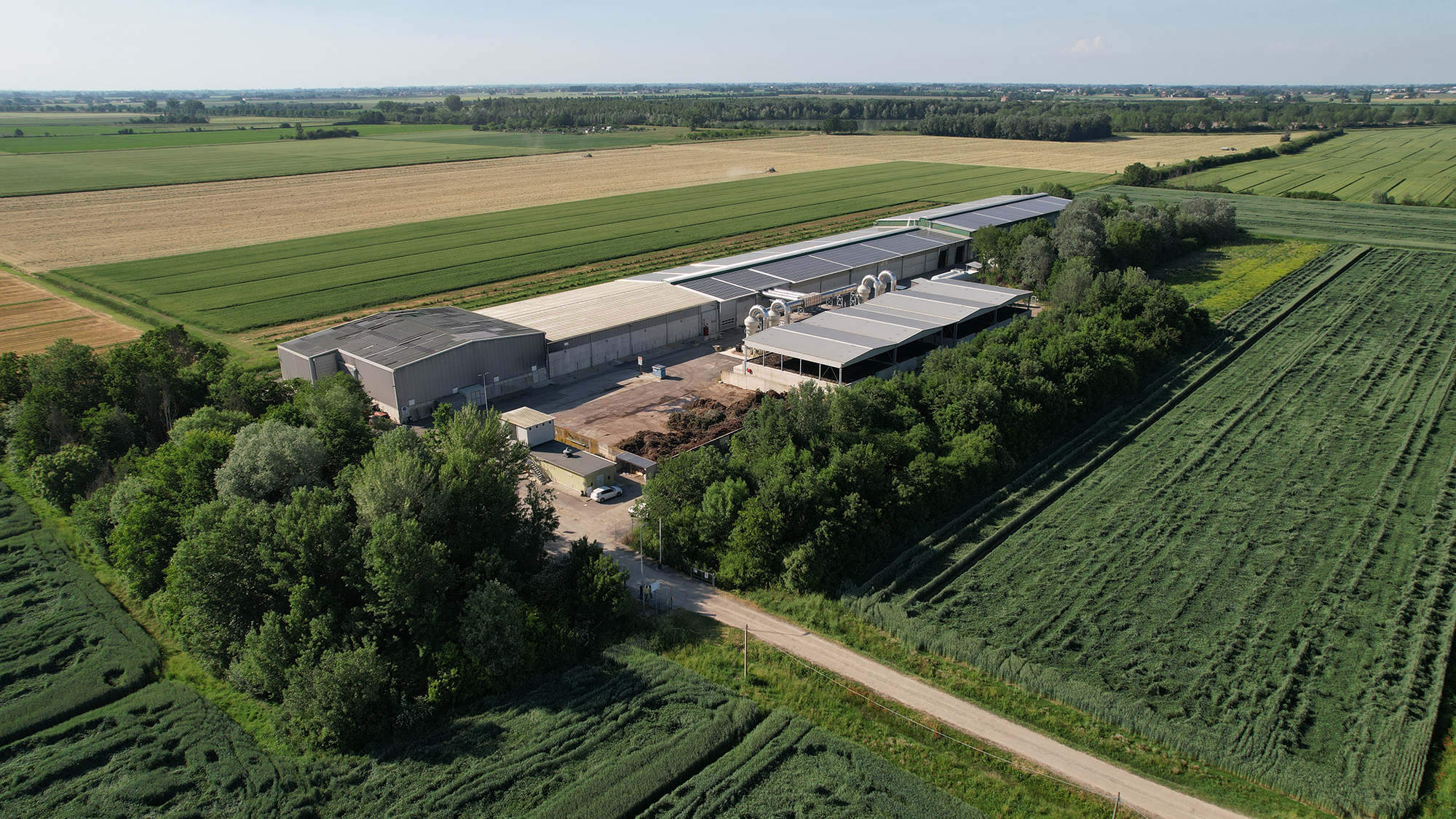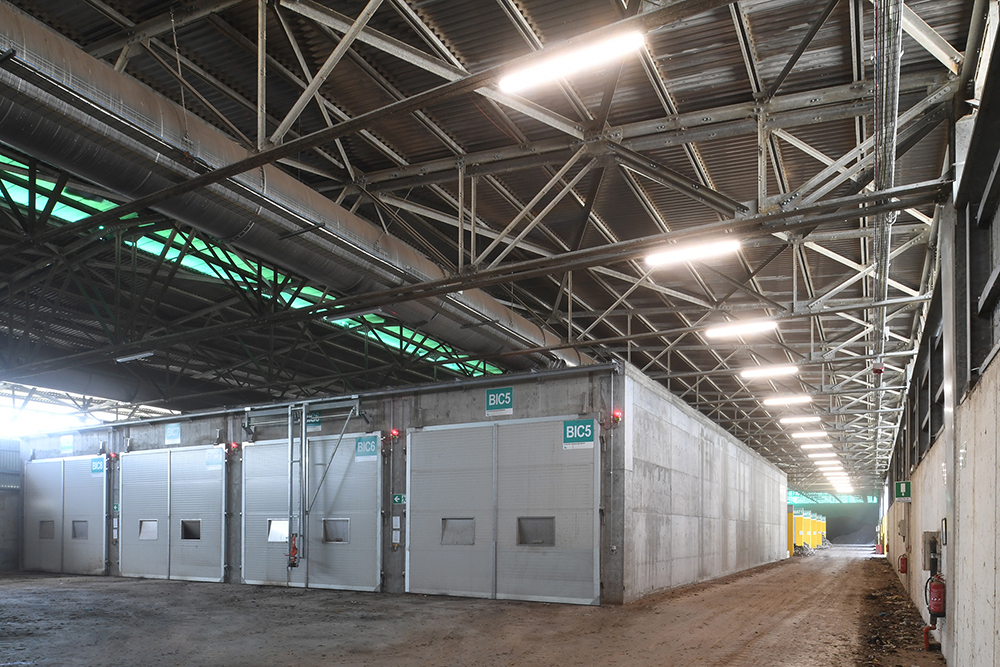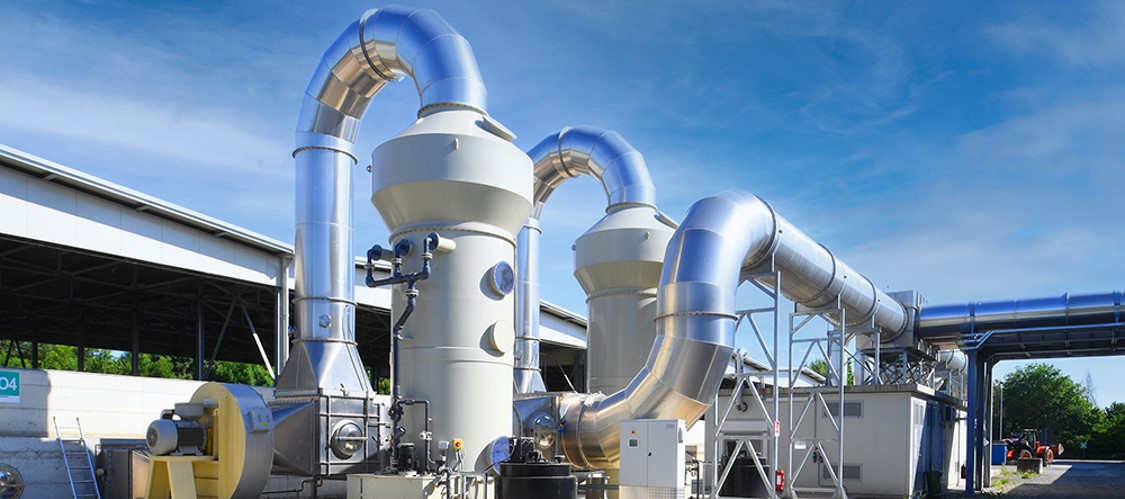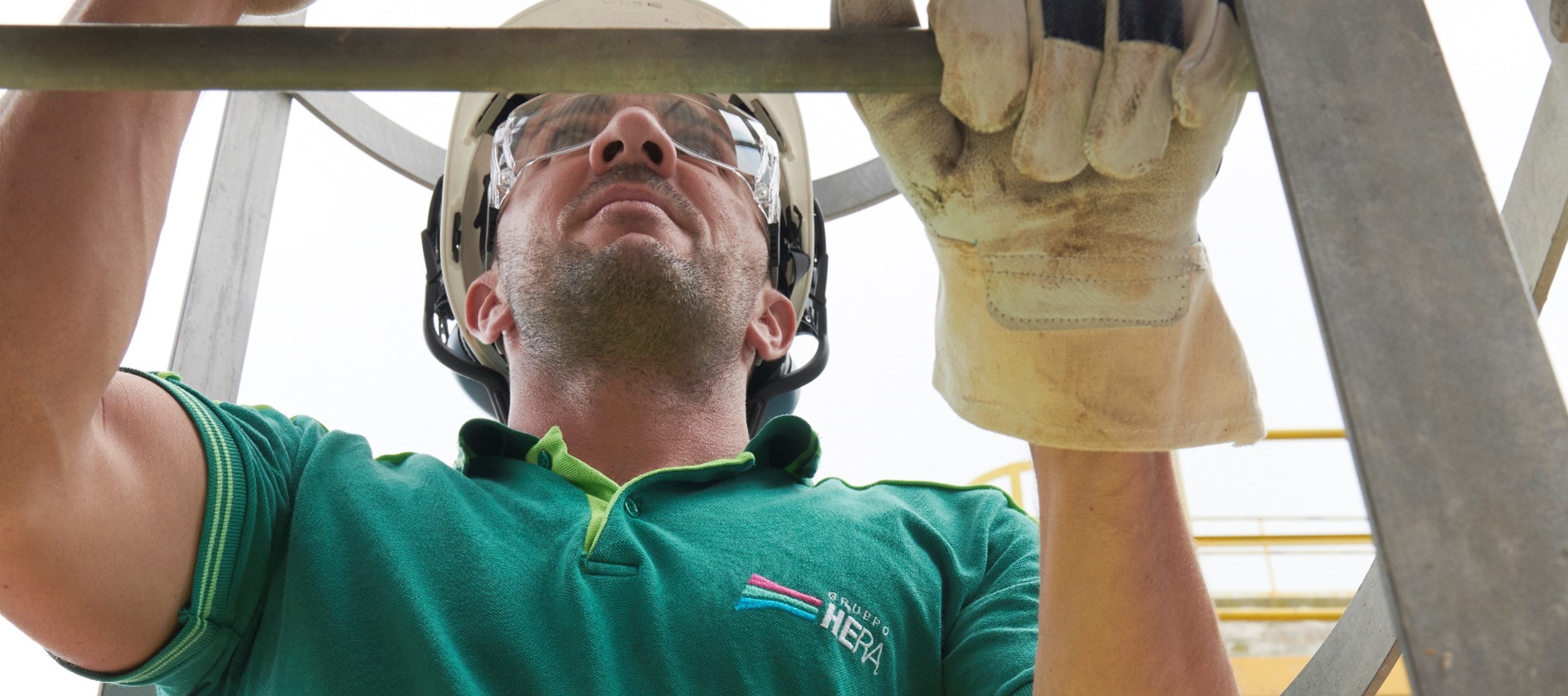Overview
The composting plant is located Fondo Valle in the municipality of Nonantola, in the province of Modena, and covers a total area of about 21,300 m2. It recovers non hazardous waste (composting) for a total annual amount of 28,000 t/year.
In the currently authorised setup (phase 3) the waste accepted consists mainly of organic municipal waste from separate waste collection (OFMSW) and lignocellulosic waste for the production of mixed composted soil improver. The plant was created with the aim of integrating the treatment of organic waste started at the Biorg plant in Spilamberto for the production of biomethane gas. In the final setup (phase 4) the treatment of up to 52,000 t/year of waste mainly consisting of wastewater treatment sludge, lignocellulosic waste and digestate from the Spilamberto biomethane gas production plant for the production of sludge composted soil improver is expected.
Page update 21 December 2022
Form
-
Treatment capacity
28,000 t/year waste authorisation phase 3; -
Treatment capacity
52,000 t/year authorisation phase 4 -
Accepted waste
Easily decomposable solid organic waste (EWC 20.01.08 / 20.03.02) -
Accepted waste
Agro industrial waste (EWC 02.xx.xx) -
Accepted waste
Lignocellulosic waste (EWC 03.01.01, 15.01.03, 20.02.01, 20.01.38) -
Accepted waste
Wastewater treatment sludge (EWC 19.xx.xx) -
Accepted waste
Anaerobic waste treatment digestate (EWC 19.06.06 19.06.04)
- Pre-treatment section: grinding of lignocellulosic waste, preliminary grinding of organic fractions (breaking of bags and functional adjustment), mixing of dry (lignocellulosic) and organic fractions (mainly OFMSW).
- Accelerated Bio-oxidation: the mixed material is sent to the accelerated bio-oxidation process (ACT). The plant has 8 static biocells where an active microbiological process is triggered, thus bringing the entire mass to temperatures above 55°C for at least 3 days. During the treatment phase, the production of malodorous compounds is controlled through a forced air insufflation system in the biocells to avoid anaerobic conditions that favour the formation of odorous compounds. Air insufflation takes place from the biocell floor, thanks to a spigot system, which also allows the collection of leachates lost from the waste mixture during the aerobic composting process. The plant structures are equipped with an exhaust air extraction and treatment system, which keeps the internal areas under vacuum. Th exhaust air is then collected at the biofilters, passing through wet scrubbers, to further reduce odours. There is also a system of pipes and ceiling jets that spray the material with leachate, as the biocells are equipped with a recirculation system.
- Primary curing: after the ACT phase, the material passes to the primary curing phase which is carried out statically on a slab with forced air structured in 3 cells, delimited by perimeter walls. The area is equipped with a forced air floor system and leachate collection from spigots, similar to that installed inside the biocells. The blowers are highly efficient and are managed by inverters.
- Refining: the raw compost is lifted by the mechanical blade and taken to the refining phase, which consists of sieving via a multifunction machine. The machine separates the refined compost (undersieve) from the recirculating lignocellulosic material (heavy overflow) and from the plastics (light overflow, processing waste).
- Secondary curing: the second stage of static curing is carried out in the northernmost part of the warehouse, on a slab without forced air, on which the material is stored to finish the curing cycle, the compost is then ready to be collected.

